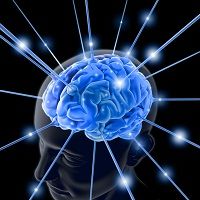Researchers Reveal Brain Chemical That Accelerates Chronic Pain
The brain chemical typically associated with emotions and other functions may be to blame for boosting chronic pain.

The brain chemical typically associated with emotions and other functions may be to blame for boosting chronic pain.
A team from The University of Texas at Dallas (UT Dallas) discovered that dopamine contributes to changes in pain activation. Previous research examined norepinephrine and serotonin, but lead author Ji-Young Kim, PhD, and his colleagues looked at this neurotransmitter after going through the process of elimination.
“These findings demonstrate a novel role for how dopamine contributes to maintaining chronic pain states,” one of the authors Ted Price, PhD, associate professor in the School of Behavioral and Brain Sciences at UT Dallas, said in a news release.
Using mice, the authors analyzed pain signals between the brain and spinal cord to better understand why chronic pain patients experience the sensation constantly despite the absence of an injury. This helped the team pinpoint A11, a collection of neurons, as a carrier of dopamine and when they were removed chronic pain dwindled.
Published in The Journal of Neuroscience, the authors noted that while the neurons proved to influence chronic pain the same could not be said about acute pain.
“We used a toxin that affected A11 neurons, and that’s when we found that acute pain signals were still normal, but chronic pain was absent,” Price explained.
The experiment did not only help identify the specific brain chemical, but it allowed the team to permanently reverse chronic pain. The body’s pain centers may not be fully understood, however, the findings give more insight to a global-wide issue.
This is just the beginning of research expected in relation to dopamine’s role in pain and can lead to new medications to rid of the constant discomfort for good.
“In future studies, we would like to gain a better understanding of how stress interacts with A11,” Price said. “And we’d like to know more about the interaction between molecular mechanisms that promote chronic pain and dopamine.”